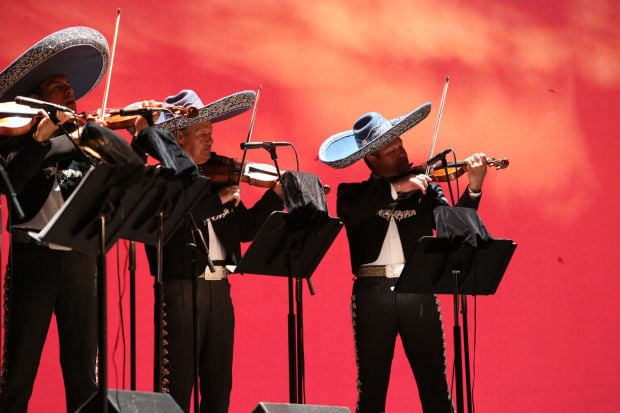When he came to Arizona Opera in spring 2016, Joseph Specter was focused on fulfilling one goal: “How can we be the most exciting opera company for Arizona?”
He thinks the answer may be coming next season, when the company shakes its programming model to the core.
Instead of five masterwork operas mounted on the big stages of Tucson Music Hall and Phoenix Symphony Hall, the 47-year-old company that serves both cities is splitting its season in half, opening with smaller, more daring operas in smaller spaces in both cities before returning to its bread-and-butter masterworks in the winter.
In September/October, the company will open its 2018-19 “Arizona Opera Red” series with Ástor Piazzolla’s tango operetta “María de Buenos Aires” at Tucson’s Temple of Music and Art and Phoenix’s Herberger Theater Center. In November, the company will mount Daniel Schnyder’s jazz opera “Charlie Parker’s Yardbird” on those same stages.
In January/February 2019, the company returns to its longtime halls for its Mainstage Series: Verdi’s “La Traviata” followed by Kevin Puts and Mark Campbell’s Pulitzer Prize-winning “Silent Night” in March and Mozart’s “The Marriage of Figaro” in April. “Silent Night,” which premiered in Minnesota in 2011, inaugurates the company’s new Marlu Allan and Scott Stallard Modern Masterworks Series.
“One of the reasons I came to Arizona was because this organization is one that really embraces the importance of ensuring that opera is a living and breathing art form today,” said Specter, who replaced Ryan Taylor as president and general manager at the end of the 2015-16 season.
Specter said Taylor’s 2014 “Arizona Bold” initiative, which included programming lesser known or completely unknown works to attract new audiences, paved the way for Red. Taylor’s initiative was aimed at supporting regionally relevant operas in hopes of broadening audiences including tapping into the state’s Hispanic population.
Through Arizona Bold the company mounted the first-ever mariachi opera “Cruzar la Cara de la Luna (To Cross the Face of the Moon)” in 2014 and the American debut of Emmerich Kálmán’s 1953 operetta “Arizona Lady” in 2015. Early this year, the company performed the world premiere of the first true Western opera, Craig Bohmler’s “Riders of the Purple Sage,” which the company commissioned from the Arizona-based composer.
Specter said Red builds on the company’s commitment to present adventurous, compelling repertoire that will appeal to new audiences and keep current audiences engaged. But doing that required thinking outside the box, and outside Music Hall.
“You’re looking at these two incredibly diverse works” — “Yardbird” and “Marîa de Buenos Aires” — “that we would never be able to present in a larger theater because the drama of the piece requires this kind of up-close and intimate experience,” he said.
“Arizona Opera’s new business plan is very exciting,” Marc Scorca, president/CEO of Opera America said in a written statement. “Increasing the production of new works, performing in different venues, and building programs to engage new and more diverse audiences are strategies that are embraced by leading opera companies across the country. Arizona Opera is to be commended for designing a plan that promises artistic success and institutional stability.”
Specter and his team have been working on Arizona Opera Red since he walked in the door, he said. The primary goal was to “connect our community to the art form in a new and exciting way, a thrilling way that is a little bit risk taking, but that we couldn’t do because the one-theater format” limited that, he said. But he admitted there was another more practical, audience-driven strategy in the timing; Arizona Opera’s largest audiences come during the winter, when seasonal residents return to escape colder climes in the East and the Midwest. The company will have an easier time in the slower fall months filling Temple of Music & Art’s 627 seats than it would filling nearly 2,300 seats at Music Hall. Same for Phoenix; Symphony Hall seats just over 2,300 compared to the Herberger’s 802.
The Temple of Music and Art anchors the downtown Spanish Colonial Revival-style cultural center that was built in 1926. It was renovated in 1990 and became home to Arizona Theater Company that year.
Both ATC and Arizona Opera were founded in Tucson, ATC in 1967 and the opera company four years later, in 1971. ATC’s Phoenix home is at the Herberger.
“We love these theaters and they are going to be great fall homes for our series,” Specter said.






